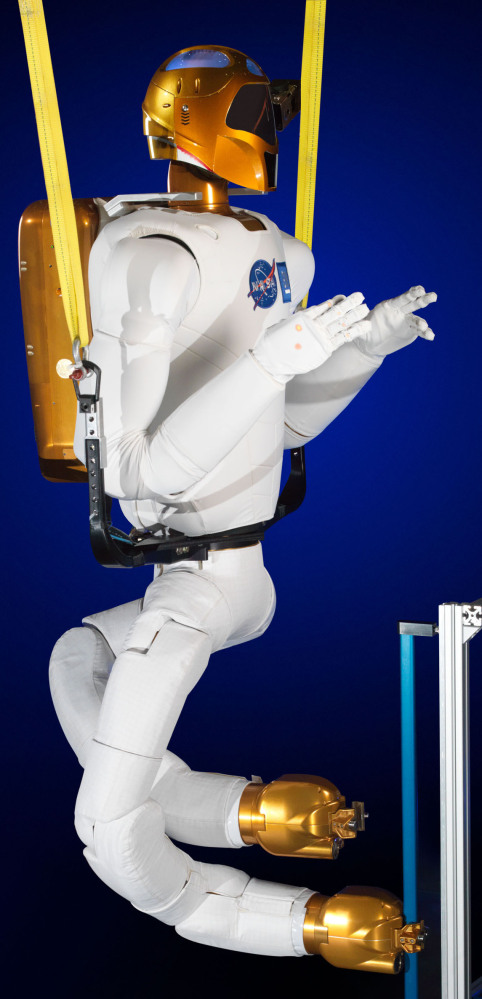CAPE CANAVERAL, Fla. — Robonaut, the first out-of-this-world humanoid, is finally getting its space legs.
For three years, Robonaut has had to manage from the waist up. This new pair of legs means the experimental robot – now stuck on a pedestal – is going mobile at the International Space Station.
“Legs are going to really kind of open up the robot’s horizons,” said Robert Ambrose from NASA’s Johnson Space Center in Houston.
It’s the next big step in NASA’s quest to develop robotic helpers for astronauts. With legs, the 8-foot Robonaut will be able to climb throughout the 260-mile-high outpost, performing mundane cleaning chores and fetching things for the human crew.
The robot’s gangly, contortionist-bending legs are packed aboard a SpaceX supply ship that was launched Friday, more than a month late. It was the private company’s fourth shipment to the space station for NASA and is due to arrive Easter Sunday morning.
Robonaut 2 – R2 for short – has been counting down the days.
“Legs are on the way!” read a message Friday on its Twitter account, (at)AstroRobonaut. (OK, so it’s actually a Johnson Space Center spokesman who’s doing the tweeting.)
Space Exploration Technologies Corp.’s unmanned capsule, Dragon, holds about 2 tons of space station supplies and experiments, Robonaut’s legs included.
Until a battery backpack arrives on another supply ship later this year, the multimillion-dollar robot will need a power extension cord to stretch its legs, limiting its testing area to the U.S. side of the space station. Testing should start in a few months.
Each leg – 4 feet, 8 inches long – has seven joints. Instead of feet, there are grippers, each with a light, camera and sensor for building 3-D maps.
“Imagine monkey feet with eyes in the palm of each foot,” Ambrose said.
NASA engineers based the design on the tether attachments used by spacewalking astronauts. The legs cost $6 million to develop and another $8 million to build and certify for flight. The torso with head and arms delivered by space shuttle Discovery in 2011 on its final flight cost $2.5 million, not counting the untold millions of dollars spent on development and testing.
Ambrose acknowledges the legs are “a little creepy” when they move because of the number of joints and the range of motion.
“I hope my knee never bends that many degrees, but Robonaut has no problems at all,” said Ambrose, chief of software, robotics and simulation division at Johnson.
Send questions/comments to the editors.



Success. Please wait for the page to reload. If the page does not reload within 5 seconds, please refresh the page.
Enter your email and password to access comments.
Hi, to comment on stories you must . This profile is in addition to your subscription and website login.
Already have a commenting profile? .
Invalid username/password.
Please check your email to confirm and complete your registration.
Only subscribers are eligible to post comments. Please subscribe or login first for digital access. Here’s why.
Use the form below to reset your password. When you've submitted your account email, we will send an email with a reset code.